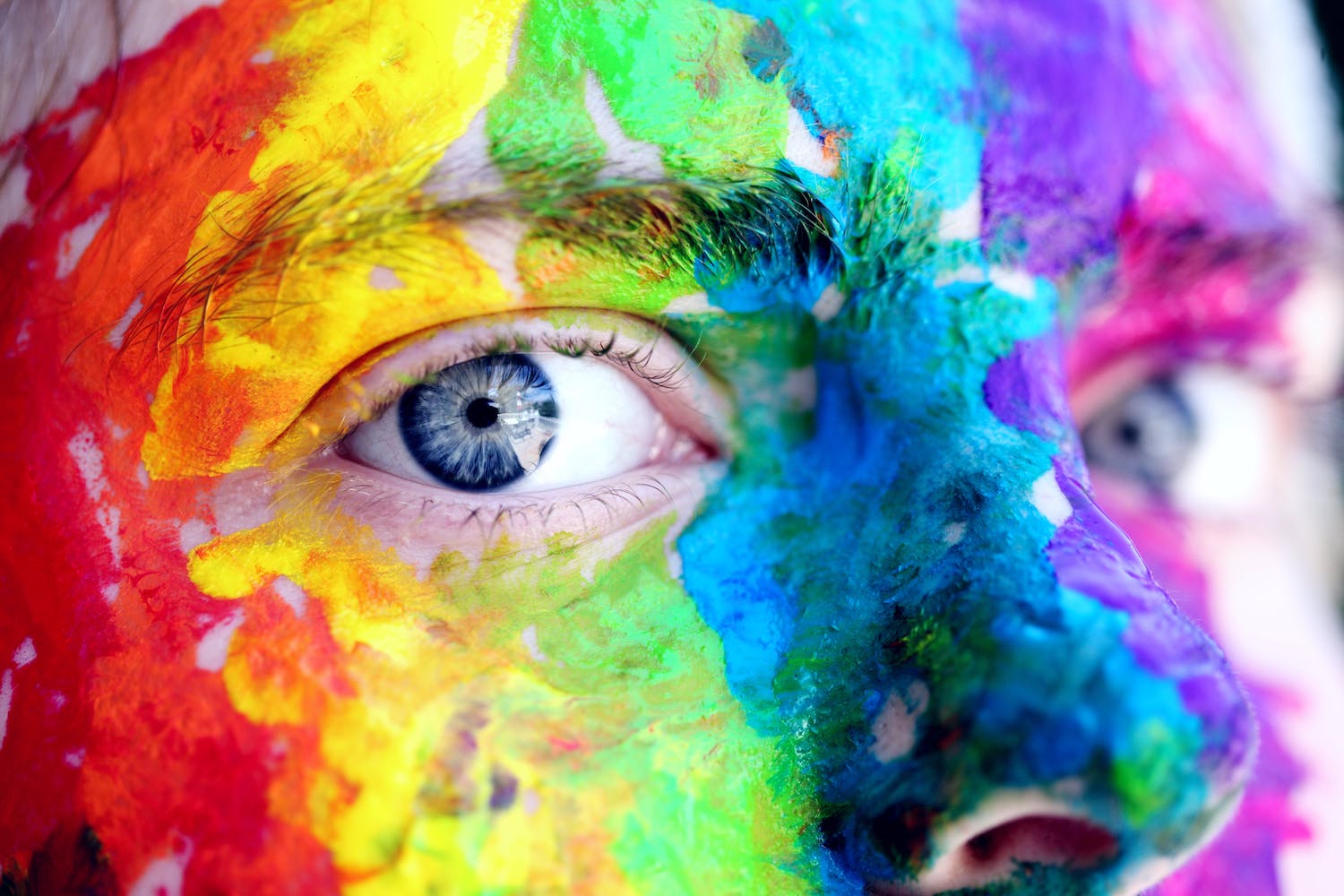Today’s blog is from Carol Verity – Chief designer, SEO obsessor & Mum from wegetdigital.com, which deliver the best SEO services… proven!
Digital Trends – Get on top of them
In the ever-evolving digital landscape, staying ahead of the curve is crucial for website designers and digital marketers. As we step into 2024, it’s time to explore the latest digital trends and innovations in website design that are set to make a significant impact.
Whether you’re a small business owner looking to revamp your website or a digital enthusiast, these trends are worth keeping an eye on.
1. Minimalism with Bold Typography
Simplicity is making a big comeback in 2024. Minimalistic designs with clean lines, ample white space, and striking typography are taking centre stage. Bold and eye-catching fonts paired with minimalist layouts create a visually pleasing and easily navigable user experience. This approach not only enhances aesthetics but also improves page loading times and overall performance.
2. Dark Mode for Enhanced User Experience
Dark mode isn’t just a trend; it’s becoming an expected feature on websites. It’s not only easier on the eyes, especially in low-light conditions, but it also reduces power consumption for mobile users. Implementing a toggle switch for dark mode can offer visitors a more personalised browsing experience.
3. 3D Graphics and Animation
In 2024, expect to see an increase in the use of 3D graphics and animations. These elements add depth and interactivity to websites, making them more engaging and memorable. From product displays to interactive storytelling, 3D graphics are pushing the boundaries of web design.
Looking ahead to 2024, we anticipate a notable uptick in the utilisation of 3D graphics and animations within the realm of website design. These elements are poised to play a pivotal role in enhancing the visual and interactive aspects of websites, thereby rendering them significantly more captivating and memorable.
Depth and Dimension with Digital Trends
3D graphics bring a sense of depth and dimension to the digital landscape, thereby transcending the boundaries of traditional 2D designs. This three-dimensional approach lends itself beautifully to a multitude of applications, ranging from showcasing products with remarkable realism to facilitating immersive and interactive storytelling experiences.
One of the primary advantages of integrating 3D graphics is the heightened engagement they foster. Visitors to your website are more likely to be drawn into an interactive environment that invites them to explore and interact with content in ways that were previously unimaginable. This increased engagement not only captures their attention but also leaves a lasting impression, making your website stand out in the crowded digital arena.
Comprehensive Understanding of Products
In the realm of product displays, 3D graphics enable users to examine products from various angles, rotate them, and even zoom in for intricate details. This level of interactivity can be particularly beneficial for e-commerce websites, where customers often seek a comprehensive understanding of the products they’re considering purchasing.
Interactive storytelling, on the other hand, leverages 3D graphics to create immersive narratives that captivate the audience. Whether it’s guiding users through a virtual tour of a property, immersing them in a gamified experience, or telling a compelling brand story, 3D animations add a layer of depth and engagement that can’t be replicated with traditional static visuals.
Harnessing technology creatively
Moreover, 3D graphics are not limited to a single industry or use case. They have the potential to transform the way information is presented across diverse sectors, from education and healthcare to entertainment and beyond. The key is to harness this technology creatively, tailoring it to your specific goals and target audience.
In summary, the prevalence of 3D graphics and animations in web design is set to increase significantly in 2024. These dynamic elements bring depth, interactivity, and engagement to websites, making them more captivating and memorable for users. Whether you’re showcasing products or weaving immersive narratives, embracing 3D graphics can push the boundaries of web design and elevate your digital presence to new heights in the coming year.
4. Voice User Interface (VUI)
With the rise of smart speakers and voice-activated devices, VUI is gaining traction in website design. Integrating voice search and navigation options can enhance accessibility and cater to users who prefer voice commands over typing. Optimising your site for VUI can also improve SEO.
5. Augmented Reality (AR) and Virtual Reality (VR)
AR and VR are no longer limited to gaming. In 2024, these technologies are finding their way into web design. For example, AR can be used for virtual try-ons of products, while VR can create immersive storytelling experiences. Implementing AR and VR elements can set your website apart from the competition.
In 2024, the landscape of technology integration in web design is undergoing a significant transformation, as Augmented Reality (AR) and Virtual Reality (VR) are no longer confined to the realm of gaming. These cutting-edge technologies have begun to infiltrate the world of web design, opening up exciting possibilities for immersive and engaging user experiences.
Augmented Reality, often abbreviated as AR, is no longer a niche concept. It has gained widespread recognition for its practical applications, especially in the realm of e-commerce. One notable use case is virtual try-ons for products. Imagine a scenario where customers can use their smartphones or webcams to virtually try on clothing, accessories, or even makeup products. This allows them to see how a product looks and fits on their own image before making a purchase. This level of interactivity not only enhances the shopping experience but also reduces the likelihood of returns, benefiting both customers and businesses.
On the other hand, Virtual Reality (VR) is making strides in creating immersive storytelling experiences on websites. VR can transport users to entirely new worlds, whether it’s for educational purposes, virtual tours of real estate properties, or engaging brand narratives. Imagine a real estate website that lets potential buyers take a virtual tour of a property, allowing them to explore every room and detail as if they were physically present. Similarly, storytelling in VR can immerse users in captivating narratives, making them active participants in the story’s progression.
Implementing AR and VR elements in web design not only sets your website apart from the competition but also offers distinct advantages. Here are some key benefits:
- Enhanced Engagement: AR and VR experiences captivate users, encouraging them to spend more time on your website and explore its content deeply.
- Memorable Experiences: Immersive experiences leave a lasting impression on users, making your website more memorable and encouraging return visits.
- Interactive Product Presentation: For e-commerce websites, AR-based product try-ons improve the shopping experience, boost confidence in purchasing decisions, and reduce return rates.
- Differentiation: In a crowded digital landscape, incorporating AR and VR elements can distinguish your brand from competitors, showcasing your commitment to innovation.
- Educational Value: In sectors like education and training, VR can be a powerful tool for providing immersive learning experiences.
- Brand Storytelling: VR narratives allow brands to convey their story in a more engaging and emotional way, forging deeper connections with users.
- Future-Proofing: Embracing these technologies positions your website as forward-thinking and adaptable to evolving user expectations.
However, it’s crucial to approach the integration of AR and VR thoughtfully. Consider your target audience, the nature of your content or products, and the devices your users are likely to use. Ensure that the AR and VR experiences you offer enhance the user journey and provide real value.
In conclusion, the era of AR and VR being limited to gaming is in the past. In 2024, these technologies are infiltrating web design, offering exciting opportunities for enhanced user engagement, interactive product presentation, storytelling, and differentiation. By embracing AR and VR elements, you can create a website that not only stands out but also provides memorable and immersive experiences, setting a new standard for web design in your industry.
6. Sustainable and Eco-Friendly Designs
As environmental concerns continue to grow, sustainable web design is gaining importance. Using eco-friendly hosting, optimising code for energy efficiency, and promoting green initiatives on your website can resonate with environmentally conscious users.
In a world where environmental awareness is on the rise, the significance of sustainable web design cannot be overstated. It’s not just a trend; it’s a fundamental shift towards responsible digital practices. Embracing sustainability in your website design isn’t just about staying in line with current concerns; it’s about contributing to a greener, more eco-conscious future.
One of the core principles of sustainable web design is opting for eco-friendly hosting solutions. Traditional web hosting can have a substantial carbon footprint due to the energy required to power data centers. In contrast, eco-friendly hosting providers utilize renewable energy sources, such as solar or wind power, and employ energy-efficient infrastructure to reduce their environmental impact. By choosing such providers, you’re not only reducing your website’s carbon footprint but also supporting a more sustainable internet ecosystem.
Optimizing code for energy efficiency is another critical aspect of sustainable web design. Bloated and inefficient code can lead to longer load times, increased server energy consumption, and a less eco-friendly user experience. Streamlining your code and minimizing unnecessary elements not only enhances your website’s performance but also reduces its energy consumption. This not only benefits the environment but also provides a better user experience, as faster-loading pages tend to retain visitors and improve overall engagement.
Beyond the technical aspects, promoting green initiatives on your website can resonate strongly with environmentally conscious users. Highlight your commitment to sustainability by showcasing eco-friendly practices within your business operations.
This can include recycling and reducing waste, sourcing products and materials responsibly, or supporting environmental causes. Transparency in these efforts can enhance your brand’s reputation and appeal to a growing audience that prioritises eco-consciousness.
Consider creating a dedicated section on your website that showcases your sustainability efforts. This could include information about your eco-friendly hosting provider, details about your code optimisation practices, and updates on your green initiatives. Use engaging visuals and compelling narratives to convey your commitment effectively.
Moreover, sustainability isn’t just about reducing your own impact; it’s also about educating and inspiring others to make eco-friendly choices. Consider creating informative content about sustainable web design practices, the environmental benefits of your choices, and tips for users to reduce their own digital carbon footprint.
In conclusion, sustainable web design is more than a passing trend; it’s a vital step towards a greener digital future. By adopting eco-friendly hosting, optimising code for energy efficiency, and promoting green initiatives on your website, you not only reduce your environmental impact but also resonate with environmentally conscious users. It’s a win-win situation that contributes to a more sustainable internet ecosystem and establishes your website as a responsible and forward-thinking digital presence.
7. Personalisation and AI-Powered Recommendations
Tailoring user experiences through AI-driven personalisation is becoming the norm. Implementing recommendation engines and personalised content based on user behaviour can increase engagement and conversion rates. Users now expect websites to understand and cater to their preferences.
Personalisation is about creating a customised and engaging journey for each visitor, and AI plays a pivotal role in making this happen. Implementing recommendation engines, powered by AI algorithms, can significantly enhance your website’s ability to understand and cater to individual preferences.
One of the primary benefits of recommendation engines is their capacity to analyse user behaviour and patterns. They can track a visitor’s interactions on your website, from the pages they browse to the products they view. With this data, AI can make real-time suggestions, such as product recommendations or content suggestions, that align with the user’s interests and needs.
This level of personalisation has a profound impact on user engagement and conversion rates. When users feel that a website understands their preferences and caters to their needs, they are more likely to stay longer, explore more content, and ultimately convert into customers or leads. It’s not just about providing information; it’s about creating a dynamic and interactive experience that keeps users coming back for more.
Moreover, the expectation for personalisation has reached new heights among internet users.
In 2024, visitors expect websites to not only understand but also anticipate their preferences. They appreciate the convenience of a seamless and personalised journey where content, products, and services are presented to them almost intuitively. When this expectation is met, it builds trust and loyalty, fostering long-term relationships between users and websites.
To harness the full potential of AI-driven personalisation, consider the following:
- Advanced Recommendation Algorithms: Invest in cutting-edge recommendation algorithms that can analyse user behaviour with precision and provide tailored suggestions.
- User Data Privacy: Ensure that your personalisation efforts are in compliance with data privacy regulations. Be transparent about data usage and give users control over their data.
- Continuous Optimization: Continuously fine-tune your AI models to adapt to changing user behaviours and preferences. Regularly update your content and product recommendations based on user feedback and performance data.
- Multichannel Personalisation: Extend personalisation beyond your website to email marketing, social media, and other digital touchpoints to create a consistent and cohesive user experience.
In conclusion, AI-driven personalisation is no longer just an option but a fundamental strategy for website design and digital marketing success in 2024. Implementing recommendation engines and delivering personalised content based on user behaviour not only enhances engagement and conversion rates but also meets the heightened expectations of today’s internet users. It’s about creating a digital experience that resonates on a personal level and fosters lasting connections between your brand and your audience.
8. Cybersecurity and Privacy
In the era of data breaches and privacy concerns, website security is paramount. Implementing robust security measures, such as SSL certificates and data encryption, can build trust with your audience. Informing visitors about your commitment to their privacy is essential.
In an age marked by a growing number of data breaches and heightened concerns about online privacy, ensuring the security of your website has become absolutely critical. It’s no longer merely an option; it’s a fundamental necessity. The consequences of a security breach can be devastating, not only for your business but also for your users.
One of the first steps towards bolstering website security is the implementation of robust security measures. Two key elements in this regard are SSL (Secure Sockets Layer) certificates and data encryption. SSL certificates, which establish a secure and encrypted connection between your website and its visitors, are vital in safeguarding sensitive information. When users see that familiar padlock icon in their browser’s address bar, they gain confidence that their data is being transmitted securely.
Data encryption takes this protection a step further. It involves encoding the data being transmitted or stored on your website in a way that makes it practically impossible for unauthorized parties to decipher. This added layer of security not only safeguards sensitive user information but also shields your website’s integrity.
However, implementing these security measures isn’t just about safeguarding your digital infrastructure; it’s also about building trust with your audience. Users are increasingly cautious about sharing their personal information online, and for good reason. By prominently displaying SSL certificates and communicating your commitment to data security, you send a clear message that their privacy is a top priority.
Informing visitors about your dedication to safeguarding their privacy is essential for several reasons. Firstly, it reassures them that their data is in safe hands. Secondly, it distinguishes your website as a trustworthy and responsible online platform. Thirdly, it helps you comply with legal and regulatory requirements regarding data protection.
Consider creating a dedicated privacy policy page on your website, outlining your data handling practices, and explaining how user information is collected, used, and protected. Make this information easily accessible and transparent. Additionally, regularly update your security measures to stay ahead of evolving threats and demonstrate your ongoing commitment to safeguarding user data.
In summary, in this era of heightened data breaches and privacy concerns, website security isn’t just a technical detail—it’s a cornerstone of trust. Robust security measures like SSL certificates and data encryption not only protect your users but also build confidence in your online presence. Clearly communicating your commitment to data security through a transparent privacy policy is an essential step towards reassuring your audience and establishing your website as a reliable and secure digital destination.
Conclusion
The digital landscape is ever-changing, and staying up-to-date with the latest website design trends is crucial for success in 2024 and beyond. Whether you’re looking to refresh your website or create a new one, embracing these trends can help you deliver an exceptional user experience and achieve your digital marketing goals.
Remember that trends come and go, so it’s important to evaluate which ones align with your brand and audience. By embracing these hot trends and tailoring them to your specific needs, you can create a website that not only looks great but also performs exceptionally in the competitive digital landscape of 2024.
____________________________________________________
Let us know in the comments what you thought of today’s blog.
If you’ve enjoyed reading it, please share it (links below).
Get your free marketing guide here to help you ignite your brand in 2024
Latest Blogs
- 8 Easy Fixes for a User-Friendly Mobile Website
- How to Spot a Resilient Business
- 8 Proven Strategies to Empower Your Remote Workforce
- How Entrepreneurs can Squeeze the Best out of the Rest of 2024
- 8 Ways Entrepreneurs Can Close Presentations with a Bang







